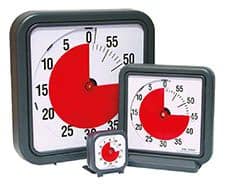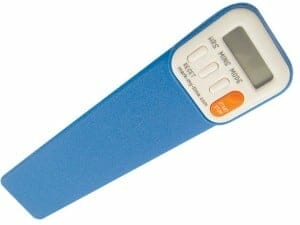Transition includes change in teacher, change in room, change in students in the class not just starting preschool, school, high school and beyond. The nature of ASD is such that transition can be extremely stressful, no matter what age or how BIG or SMALL the change maybe.
Changing Teacher is like…. Moving to a Foreign Country
For the child with an Autism Spectrum Disorder (ASD) moving to a new teacher, classroom or campus is like moving to foreign country. There is a different language (eg one teacher says ‘pack away’, new teacher says ‘clean up’). Teachers and other students have different facial expressions and body language to interpret, new rules, new schedules, new smells, different pencils just to mention a few changes. This new ‘foreign country’ causes the child to feel enormous anxiety and stress, which in turn can lead to behaviour. This anxiety and behaviour can be managed by effective planning and transition strategies.
This e-newsletter aims to give you ideas, strategies and solutions to managing transition and have in place strategies ready to make 2016 a Success!
The key issue in transition is managing anxiety, put simply: Managing Change = Managing Anxiety.
There is so much information to pass on for the Transition to be successful, I have listed some checklists and ideas to make this easier:
· List the Top 10 things you know that you wish you knew at the start of the year.
· Complete the Student Summary Proforma – for transition
· Handover resources such as Time Timer, Schedule, Sensory Toys, Visuals > see below for more ideas
 |
 |
 |
· Consider the Transition Strategies 2016 see below
· Parents create a card with a photo of your child and inside some important information about your child:
Things they love, special interests, sensory notes and diagnosis. This is a wonderful way to introduce your child and then can be used for relief teachers in the future. (PS: keep it brief!).
Best Wishes
Sue
www.suelarkey.com.au
PS PS: Professional Development /Training Days are filling fast for 2016. If you would like me to come to your school/organisation to run workshop in 2016 please contact Dearne asap dearne@suelarkey.com
Transition Strategies 2016
Transition includes change in teacher, change in room, change in students in the class not just starting preschool, school, high school and beyond. The nature of ASD is such that transition can be extremely stressful, no matter what age or how BIG or SMALL the change maybe.
We need to consider all the changes and pre-warn the child. Many children with an ASD have a script in their minds for everything that happens in their day so it is very important with any change we offer a script to explain any changes in advance. This may include:
Sensory/Environment: New sounds, movements, uniforms etc. For example with secondary students it is important they get to experience a busy locker area as part of transition. Too many people take them on a tour when no one is in the school.
People: Who will be their teacher, assistant, which students will they know, who to go to for help, getting to know office staff, etc.
Visuals: Map of the school with toilets, classroom, bags, office, library, etc.
Video /Film on Ipad: Video of the new school, environment, and teachers is wonderful as they can play over and over. Make sure you show the environment HOW it actually looks; for example video of busy locker area, playground full of students rather than empty.
Social Scripts/Photo Books: Create social scripts or photo books that show the child information. Many Asperger’s children need “reasons”: Why do I have to change teacher?, Why do we have to move classrooms? Why can’t I stay with my friends? You can create social scripts that explain this and they can refer back to.
Photos: Class teacher, important staff, toilets, bubblers, etc.
Playground: Routines and activities, equipment, games in playground.
Do they want friends? Who do they know already? Clubs they can join.
Lunch routine: Practice using lunch box, container, drink bottle, etc.
Calendar: Use a calendar to show when their visits will be and they will start in the new class.
Getting to school: Bus, walk, car. Practice the routine, discuss what to do if late or raining. (Some students are best dropped off right on bell others love morning activities in playground).
Calming Strategies: Ensure the child knows where in the new environment they can go to calm or access their sensory tools
For children starting school in 2016 please ensure they can:
Ø Manage their lunch box.
Ø Screw and unscrew drink bottle top.
Ø Cope with glad wrap.
Ø Open food packets/containers. (Avoid sending yoghurts, tinned fruits they can’t open.)
Ø Zip and unzip school bag – a larger bag is generally easier for your child to get things in and out of.
Ø Wear a hat. (Most schools require a sun hat.)
Ø Put on shoes and socks. (Use pull-ons or those with velcro fastening.)
Ø Put on and take off jumper and coat.
Ideas to create a successful orientation /transition
Visits: One visit a week over a few weeks is often best.
Visits for secondary students: Get another student to show the ASD student around, that way the older student can let them know about “other rules”, for example “that is where the smokers go!” There are so many HIDDEN rules in schools and the other students are the best to point these out.
Reverse transition: Staff go and visit the student in their current environment. This gives staff valuable insights into the child’s current interests, how they play, interact and communicate and strategies used with the child.
Invite in before school starts: Most teachers set up their classrooms before the first day. It is worth inviting the student with ASD to visit to see “where to put their bag, their belongings, their seat, line up”, any structures that will make day one calmer for everyone!
———————————————————————————–
Don’t forget just moving classrooms can be a HUGE change for a child with an ASD!
———————————————————————————–
Suggested Reading to Support Transition
I know many of you who get this e-newsletter have my books which have lots more ideas and resources on Transition. For more information I suggest you refer to these books:
· Making it a Success by Sue Larkey (page 115-116)
· The Essential Guide to Secondary School by Sue Larkey and Anna Tullemans (page 79)
· The Early Years by Sue Larkey and Gay von Ess (page 82)
· From Anxiety to Meltdown by Deborah Lipsky (page 172)
· I’m Going to School by Anna Tullemans



 Sorry we no longer ship items outside Australia. Please consider the digital versions of Sue’s Books –
Sorry we no longer ship items outside Australia. Please consider the digital versions of Sue’s Books – 